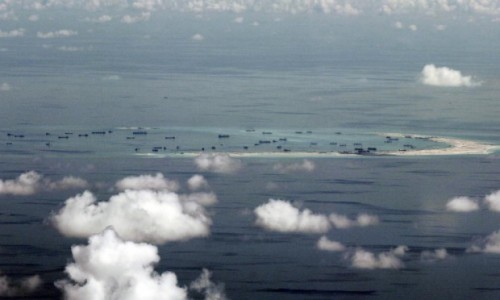Professor Joseph Nye, member of Boston Global Forum Board of Thinkers, and Harvard University Distinguished Service Professor, asserted that a US-China conflict in the South China Sea can and should be avoided.The claim was made in recent article published on the Project Syndicate, after the incident of a US Navy surveillance aircraft flew near Fiery Cross Reef in the Spartly Islands in the South China Sea and received 8 warnings by the Chinese Navy to leave the area.
The U.S took no position when China began its construction activities on Mischief Reef in 1995, which is claimed by both the Philippines and China. But it expressed stronger reactions when China initiated dredging operation that is to turn reefs into artificial islands and might then declared an Air Defense Identification Zone that could interfere with the right of free passage – “a major US interest”, as Professor Joseph Nye highlighted.
Read his full analysis HERE or visit the Project Syndicate website.
Avoiding Conflict in the South China Sea
June 3, 2015 | By Professor Joseph Nye
Chinese naval vessels patrol near disputed reefs in the South China Sea. (Photo Credit: Ritchie B Tongo/AP)
OXFORD – When a US Navy P8-A surveillance aircraft recently flew near Fiery Cross Reef in the Spratly Islands in the South China Sea, it was warned eight times by the Chinese Navy to leave the area. Chinese Foreign Minister Wang Yi said that, “China’s determination to safeguard its sovereignty and territorial integrity is as firm as a rock.” US Defense Secretary Ashton Carter replied that, “[T]here should be no mistake about this: the United States will fly, sail, and operate wherever international law allows us, as we do all around the world.” So, is a US-China conflict in the South China Sea imminent?
In 1995, when I was serving in the Pentagon, China began building structures on Mischief Reef, which is claimed by the Philippines and lies much closer to its shores than to China’s. The US issued a statement that we took no position on the competing claims by five states over the 750 or so rocks, atolls, islets, cays, and reefs that comprise the Spratlys, which cover a vast area – 425,000 square kilometers (164,000 square miles) – of the South China Sea. We urged that the parties involved settle the disputes peacefully.
But the US took a strong stand that the South China Sea, which includes important sea lanes for oil shipments from the Middle East and container ships from Europe, and over which military and commercial aircraft routinely fly, was subject to the United Nations Law of the Sea Treaty (UNCLOS).
To back up its territorial claim, China relies on a map inherited from the Nationalist period – the so-called “nine-dashed line,” which extends nearly a thousand miles south of mainland China and sometimes as close as 40 or 50 miles from the coastline of states like Vietnam, Malaysia, Brunei and the Philippines. All of these states claim the 200-mile exclusive economic zones granted under UNCLOS.
When the dispute over Mischief Reef erupted, Chinese officials failed to clarify the meaning of the nine-dashed line, but, when pressed, they agreed that the dashes demarcated areas where China had sovereign claims. At the same time, they agreed that the South China Sea was not a Chinese lake, and that it was governed by the UN treaty. On this basis, the US and China avoided conflict over the issue for nearly two decades.
CLICK HERE to read the full article.
